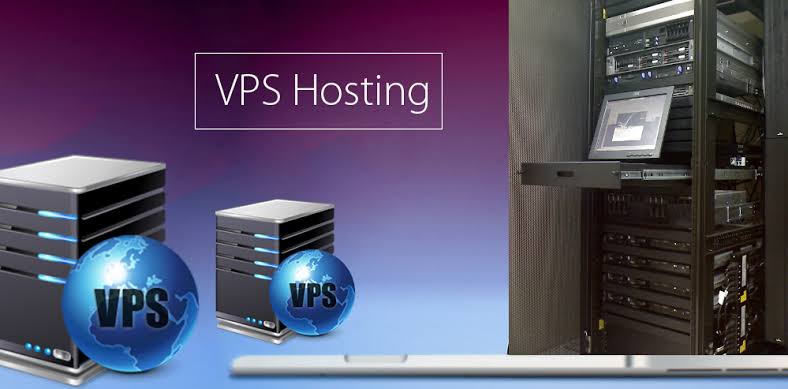Price is often the make-or-break factor for every customer. Even IT is no exception to this rule. The problem faced by every market is that the customers want to pay as little as possible and, in turn, demand exorbitant services.
Moreover, a general perceptive that has been weaved is that cheap products are of low-quality.
As a hosting company, we have often questioned whether cheap VPS hostingservices are worth anything or should they (businesses) spend on expensive dedicated server hosting.
When it comes to choosing a host, there are a few things you should look before you opt for a service. A host that does not provide even one of these things is worthless, no matter how small an amount you are paying for the service.
So, a cheap VPS hosting is really worth it as long as it caters to the following–
A strict no to downtime
You could have N number of reasons to host a website, but to incur downtime undoubtedly is not one of them. Nobody starts a website to get hit with downtime.
So, make it a point that downtime, however small, has no place in your domain. Typically, it would be best if you had at least 99.8 % uptime, and anything below that should ring an alarm.
Depending upon your need, you could allow for some more downtime, but always keep a buffer of 0.2% for yourself.
No substitute to support
There is virtually no substitute for customer support. Since the server has been provisioned over your vendor’s infrastructure, your host is likely to know better where the fault might arise.
However, this might not be the case if you are planning to procure a server within your premises. As the control will then always lie in your hands, it would make little to no difference whether you opt for support or not.
Control is a must
There literally no good in having a VPS server that gives you absolutely no control of your server. You might as well have a shared server.
Take away the control, and what is left of a VPS is shared hosting, but at five times more price.
So, control is a must. Greater the control, greater is the freedom to do as you want, and greater is the customizability.
There is nothing more frustrating than not being able to implement your ideas. As an entrepreneur, you would never want your ideas to be contained by your host.
Your resources should be your own
There is no dearth of providers who try to squeeze in any extra money they can by selling the same commodity twice.
A big fraction of our current customers is those who were duped by their previous vendors. Many a time it has been noticed that if you do not use resources (allocated to you in a VPS) to its full potential, the provider may slyly sell off the idle resource to some other company.
And neither would you know that you have been sharing resources with another website until there is a traffic surge in your website.
Low TAT (turn-around-time)
Even if your service comes with support, it is worthless unless there are proper reversal and redressal of your queries.
Support is rated on a scale called TAT (turn-around-time). TAT is the time after which you receive a response from the support team after you have filed a grievance or an inquiry to the system.
Some new hosting companies have a TAT of a few hours, while some of a few weeks.
Upshot
Is cheap VPS hosting any good?
It is, provided the parameters mentioned above are included in the services.
What if the host denies any of these factors in the services?
The host is not worth spending a penny then. Look for another host that provides at least these services, even if it is charging extra for the service.
Cloud computing, to brief, is the delivery of computing service like server, storage and more over the internet. A number of entrepreneurs we spoke with have already moved their business to the Cloud. Very often we’ve seen businesses stumbling upon the choice of correct Cloud hosting service and its type.
This blog will only scratch the surface, so to speak, but will prove sufficient enough for you to decipher the correct Cloud type for your business.
Clouds can be classified either on the basis of location or the services it offers
On the basis of location, Cloud assumes the following types:
- Public Cloud
Such Clouds, as the name suggests, have multiple tenants or customers- all sharing the same virtualized server space. Public Clouds are generally free- but upto a limit- and beyond that, metered to allow the public to pay only for what they use. It is a popular choice for hosting everyday apps, and storing photos, videos, and other files.
Public Cloud offers off-load management, so the hardware and all the other aspects of a server is solely and entirely managed by the provider. It reduces undue burden from users to whom giving up on control (of Cloud) is not an issue.
- Private Cloud
Private Cloud, as the name suggests, has only one tenant that solely rents/owns the entire facility at his disposal. Most commonly deployed by a single organization, it offers the goodness of public Cloud glued with the freedom of resource-control. It is an effective way to virtualize a large pool of IT equipment of an organization without allowing a third party to have undue control on the organization’s way of managing and running its business.
A private Cloud is maintained in house, within the organization’s premises. This practice seems to stand against the philosophy of Cloud- to reduce infrastructure complexity and capital expenditure. One of the main reasons why companies are still migrating to private Clouds to run their applications is that it provides unique and competitive advantages like R&D, better management, and security.
- Hybrid Cloud
Hybrid Clouds are so-called because they fasten public and private Clouds for their business. The use of such Clouds has gained momentum since its inception as it helps overcome the disadvantages of Public Cloud- no control, and less security- while cutting down the cost of investing solely in Private Clouds for very general operations.
Companies use both the public and private components of a Cloud; the more important and sensitive operations are compassed on private Cloud. In case of huge traffic or low server storage, some operations can be moved to the public Cloud. The proportions in which the two Clouds are intermingled varies as per the organization’s needs.
- Community Cloud
It is a multi-tenant Cloud shared by many organizations at once. It can be managed internally or by the third party.
Community Clouds are often designed for businesses & organizations working on a joint project, or application. Or working on a development that requires a common computing facility that can facilitate easy data sharing between the organizations.
Based on the services offered by the Cloud provider, Cloud server hosting is again split into the following types. The below mentioned classifications are sometimes also called Cloud computing stack, as they form a pyramid, building one on the top of the other.
- SaaS- Software as a Service
Software as a service is accessible by web browser or lightweight apps, and allows a single instance of software to run for multiple users. Such services are generally platform independent and only needs a working internet connection.
Common examples include: Gmail, HR & Helpdesk solutions.
The advantage of opting for SaaS is that it is universally accessible and allows easy collaboration. Multi-tenancy is an added advantage as the same service can accommodate multiple users. However, there are limitations pertaining to the portability. Moreover, these services are only as good as your internet connection. Poor performance of the internet can outweigh the performance of the service- however seamless it might be.
- PaaS- Platform as a Service
PaaS is a domain for developers. Amazon web services, windows azure are one on its key examples.
PaaS is aimed at providing development environment and comprises: (i) language execution environment, (ii) Operating System, and (iii) a web server. It capsules all the environments necessary for the developers and enables them to run the program without troubling themselves with the underlying infrastructure.
The service provider gives control of the application resources to the users and the primary infrastructure resources are completely managed by the service provider.
The downside of such service is that it binds developers to use the provider’s language and tools.
- IaaS – Infrastructure as a service
IaaS offers Computing architecture & the infrastructure in a virtual environment. The resource managed by the provider in IaaS includes data storage, virtualization, server & networking. The remaining resource viz. apps, data, runtime & middleware is handled by the user. IaaS reduces the infrastructure complexity of an organization as it aims at renting the entire real estate, with the hardware, to the use of the organization.
The chief examples of Infrastructure as a service include Gogrid and dedicated server hosting.
A lot of ambiguity surrounds the deployment of Cloud computing for an enterprise. The effect of Cloud is already tangible and so profound is its use for a business that it has already made its way to our list of business essentials. Cloud is a big subject in itself, hence, with this article we have aimed at keeping the information as grounded, and concise, as possible.
Happy computing



